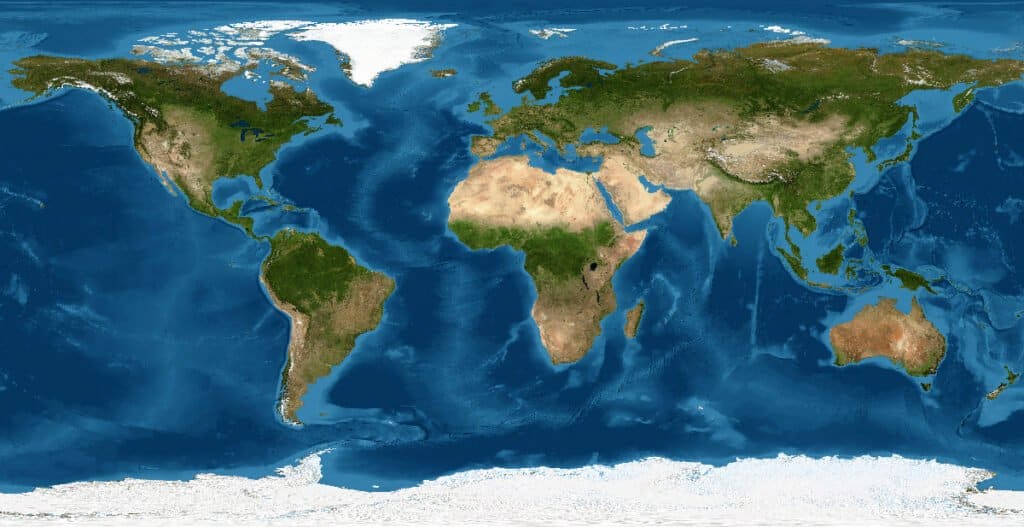European geographers once thought that only Europe, Asia, and Africa existed. So after the Americas were discovered, they thought of the continents as a new world.
New World Meaning and Origin
The term “new world” refers to the western hemisphere, specifically North and South America. It was first coined in the 16th century during the Age of Discovery. European geographers once thought that only Europe, Asia, and Africa existed. So after the Americas were discovered, they thought of the continents as a new world. Amerigo Vespucci, an Italian explorer, published his work about this land and concluded it was a “new continent.” After this, people referred to Africa, Asia, and Europe as the “old world.”
New World Countries
New world countries include all countries in North America and South America, such as the United States, Canada, Mexico, Brazil, Colombia, Venezuela, Cuba, and the Bahamas.

The term “new world” refers to the western hemisphere, specifically North and South America. It was first coined in the 16th century during the Age of Discovery.
©Viacheslav Lopatin/Shutterstock.com
New World Examples
“The American bison is native to the new world.”
“Some commercially important food plants only occur in the new world.”
“New world warblers are small passerines native to the Americas.”
“New world wines are full-bodied and have higher alcohol content.”
Contemporary Usage of the Term “New World”
Many argue that the term “new world” is outdated and doesn’t accurately describe the world. But we still use the term in certain situations, especially when discussing some historical topics. We also use “new world” in wine terminology, biology, and agriculture.
New world wines are those grown outside of the traditional European regions and include North America, South America, South Africa, New Zealand, and several other areas. But even in the wine industry, this term is often too generalized.
In biology, species are divided into two groups: those in the old world and those in the new world. And even in taxonomy, species only found in the Americas are given the “new world” title to distinguish them from their old world counterparts. The term is also used in agriculture to describe crops and other domesticated plants and animals.



